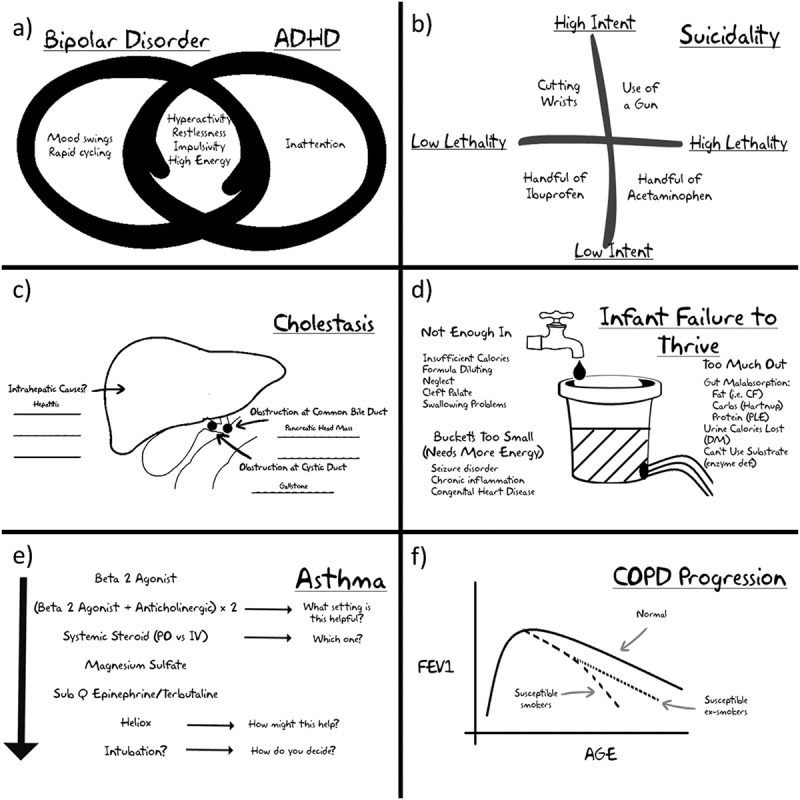Figure 1.

Examples of figures that work well for collaborative construction in the mini-chalk talk format: (a) Venn diagrams are useful for showing overlap of symptoms such as those in bipolar disorder and Attention Deficit Hyperactivity Disorder (ADHD); (b) two by two tables allow for comparisons of features on two spectra as in this paradigm for degree of lethality vs. intent in suicide attempts; (c) simple anatomy drawings can be used to encourage discussion about causes of disease by location, such as cholestasis – note the blank spaces represent the fact that learners should be encouraged to help build the figure; (d) visual paradigms/analogy can be useful for discussing categorization of causes of diseases, such as failure to thrive in an infant; (e) pathways can be built in real time for escalating treatment options; (f) simple graphs can be used to visually represent concepts such as disease progression.
